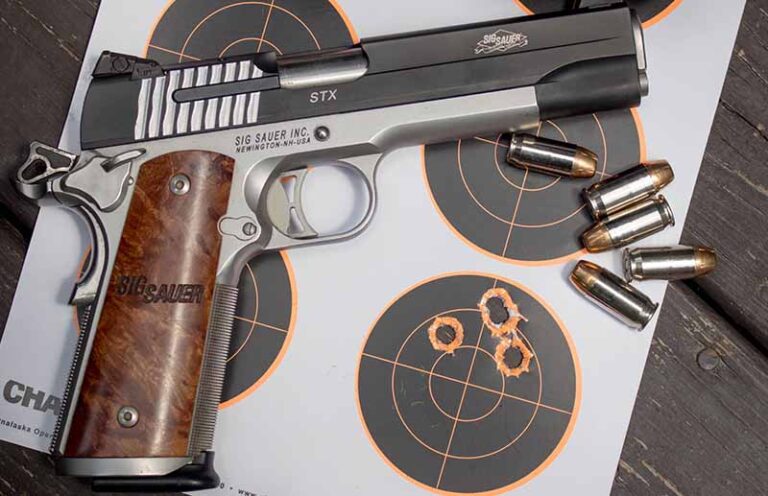
A discussion on the finer points of defensive handgun ammo and how to choose the right load for your needs.
If you carry a firearm on a daily basis, odds are good that you load and unload your weapon frequently and have already given serious thought to your choice of ammunition. Bullet weight, construction and conformation all play a role in terminal performance, and while very few will have an opportunity to test their ammunition in a controlled environment, there’s plenty of data available to help make a proper decision.
I’m an unabashed bullet hound. I love the old styles, from cast lead to the early jacketed bullets—all the way through the latest and greatest modern developments. And while there are myriad choices available to the handgunner, I have a few favorites that have checked all the boxes for me.
Bullets that’ll feed reliably in an autoloader, print consistent groups, hang together when needed and yet expand reliably to rapidly neutralize a threat, all in a wide variety of circumstances, have become revered by defensive handgunners. And, it’s what you should be looking for, too.
Let’s look at the various styles of bullets and ammunition that just might save your bacon one day, be it from a two- or four-legged threat.
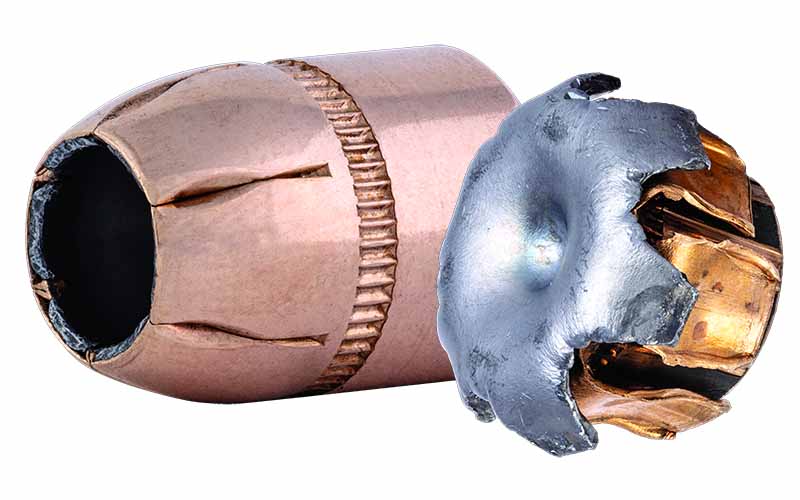
Long Live Lead?
Despite my penchant for modern bullet designs, my father—dear Ol’ Grumpy Pants—is always quick to point out how many species were nearly pressed to extinction, and how many graves, both civilian and military, were dug as the result of lead projectiles.
Lead projectiles—where they’re still legal—make a sound and affordable choice, especially for the slower cartridges. Both the .38 Special and .45 ACP have had great success with traditional lead bullets, and there are many economical means to feed those styles of cartridges. From formed projectiles offered in bulk, to purchasing a bullet mold and casting your own projectiles, a lead bullet is as effective here in the 2020s as it was in the 1870s.
While lead projectiles will foul a pistol’s bore, there are coated choices, like the Federal Syntech or Solid Core, that’ll minimize that fouling, yet still offer the performance of a lead bullet. Softer lead projectiles (we’ll get to the hard stuff in a second or two) tend to expand rapidly, quickly transferring their energy. This can be a good thing, with the exception of the fact that the rapid expansion will compromise penetration. When I use lead projectiles, I like them to be heavy-for-caliber, such as a 158-grain lead bullet in the .38 Special or 230-grain slugs in the .45 ACP.

Add a bit of antimony to a lead bullet, or use good old linotype, and you’ve got a much tougher projectile, capable of truly impressive penetration, with much less fouling in the bore. For the speedier handgun cartridges, like the .44 Remington Magnum, modern .45 Colt loads and the .357 Remington Magnum, a “hard cast” bullet can give extremely impressive results.
In fact, when testing differing handgun projectiles through different construction materials representing interior and exterior walls, a 325-grain hard cast bullet from Choice Ammunition—designed for defense against bears—was virtually unstoppable. It’d make a serious defensive bullet, but with the caveat that over-penetration is a reality.
The Copper And Lead Marriage
It was in the 1880s that the copper jacket was first added to the lead bullet to help take advantage of the higher velocities achieved by the first iterations of smokeless powders. You see, lead projectiles can only be pushed so fast … and then the lead begins to smear within the bore. While this phenomenon is much more common with rifle cartridges, the handgun cartridges saw the addition of a copper jacket add to the structural integrity and improve the terminal performance.
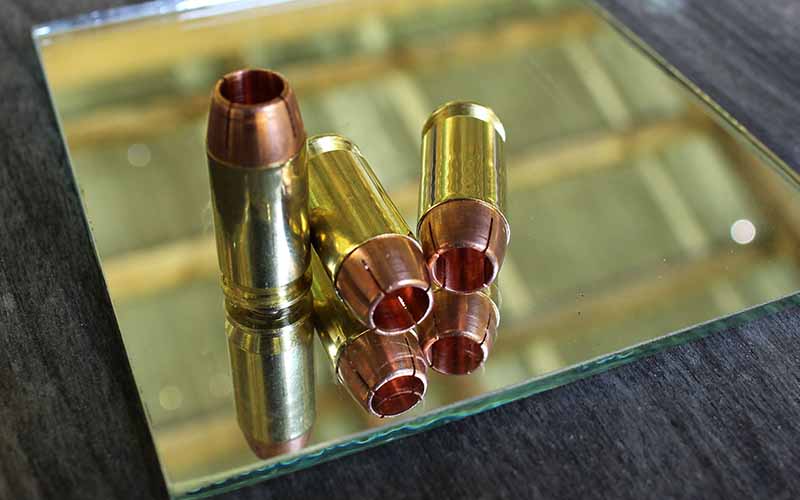
A cup-and-core jacketed hollow-point is one of the most popular choices, as it’s a great blend of affordability and acceptable performance. Federal Premium’s Punch is a great modern example of this style of defensive handgun ammo, as is the Winchester Big Bore and the Hornady Custom line.
The latter uses the Hornady XTP (eXtreme Terminal Performance) bullet, with its skived jacket to initiate even expansion, and which wraps around the lip of the hollow-point to eliminate exposed lead. Federal’s Punch is similar in design to the XTP and makes a great choice for those on a budget, while the Big Bore line shows a considerable amount of lead at the nose to give a bit more expansion upon contact.
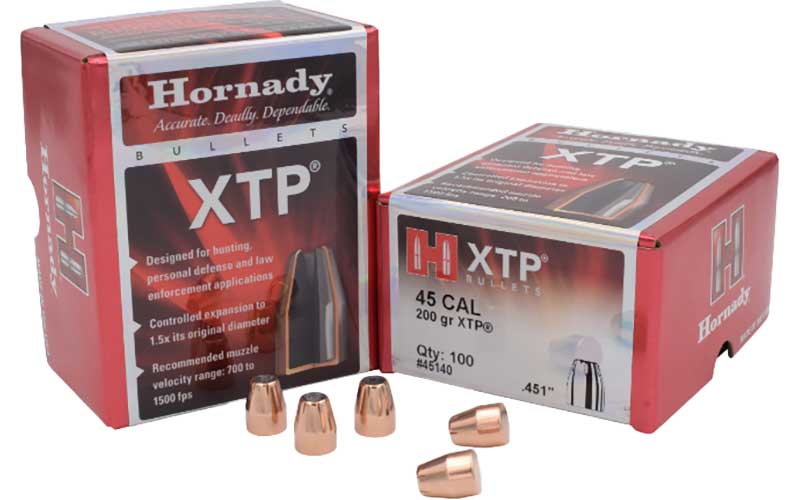
And while a cup-and-core bullet still gets the job done, there are means of building a better mouse trap. Federal’s Hydra-Shok and HST are both jacketed hollow-points, but each with a unique twist that drastically enhances terminal performance. Long relied upon by law enforcement, both bullets have been subjected to rigorous testing according to FBI protocols and have come up aces. Shooting into bare ballistic gelatin, into gel through layers of common clothing, through drywall and into gel, and lastly through windshield glass—all of these will test the mettle of a handgun bullet.
The Hydra-Shok is the older of the two, being designed by Tom Burczynski and released in 1989, and uses a notched copper jacket in conjunction with a center post to deliver the goods in a wide variety of shooting situations. The need to have a hollow-point design, which would open reliably in any circumstance and not plug with material, was imperative in the post-1986 Miami shootout world, and the Hydra-Shok checked all the boxes. Expanding to twice caliber, with a retained weight approaching 100 percent, the Hydra-Shok remains a solid choice to this day to save your life. Despite the features of the Hydra-Shok, Burczynski revised the design to better penetrate various barriers, resulting in the Hydra-Shok Deep.
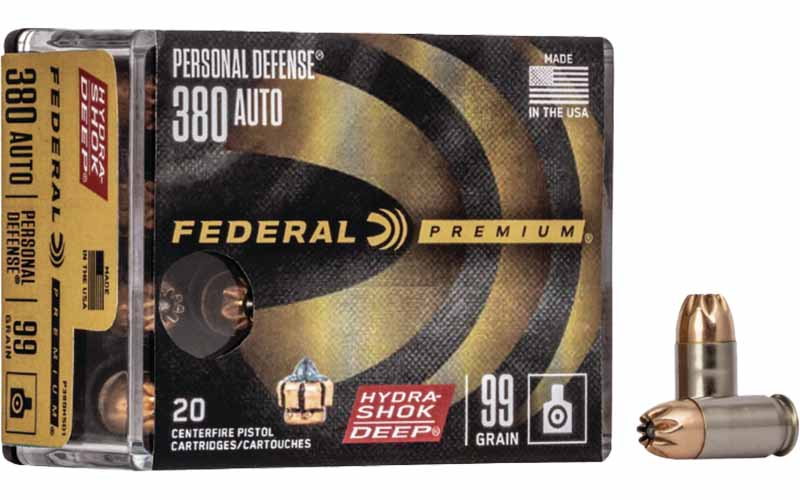
Next came the Federal HST—again a Burczynski design—with a revised meplat in order to provide the most reliable feeding possible, with a hollow cavity designed for the best performance yet in the highly specified FBI protocols. The skived jacket was retained, though when you dig a Federal HST out of ballistic gelatin, it looks like a flower in full bloom, wrought of a nasty blend of razor-sharp metals. Weight retention is as high or higher than the Hydra-Shok, with deep penetration through all sorts of media. Based on all the defensive handgun bullets I’ve had the pleasure of testing, the Federal Premium HST is my favorite, and the bullet I carry on a daily basis.
Strengthening The Bond
Chemically bonding the jacket and core is a means of preventing premature bullet expansion, and in faster handgun cartridges it makes all sorts of sense. The higher impact velocities that can strain the softer lead bullets and the jacketed projectiles of lower sectional density won’t pose an issue to a bonded-core bullet. Examples of this design are the Swift A-Frame, Federal Fusion and the Speer Gold Dot, all of which are available in both component form as well as loaded ammunition.
The Swift A-Frame revolver bullets possess the same partitioned design as their larger siblings used in the centerfire rifles, with the front core chemically bonded to the thick jacket and have proven themselves against all sorts of dangerous game, from bears to bison and more. Speer’s Gold Dot is another of the top-tier projectiles favored by law enforcement, and with good reason: it has a reputation for impeccable feeding in the vast majority of handgun designs, and its recovered conformation resembles the HST’s metallic flower.

Federal’s Fusion is—much like the rifle variant of this projectile—vastly overlooked. An excellent bonded-core bullet, the Fusion handgun bullets are tough, and if you want a readily available choice for handling hunting and defensive needs, well, you could make much worse decisions. With a skived jacket and shallow dish in the lead nose, the Fusion will perform well at shoe-string distances in a magnum cartridge … as well as at hunting distances where velocities might drop off.

Where Lead Is Not Welcome
Moving to the lead-free copper alloy bullets, choices like the Barnes XPB, Lehigh Defense Xtreme Penetrator and Cutting Edge Bullets’ HG Raptor are all suitable choices for a defensive situation. The Barnes has a skived nose with a deep hollow-point. The Lehigh bullet has a nose profile that looks much like a Phillips-head screwdriver bit. The HG Raptor is designed to have the section of the nose along the hollow cavity break off into small blades after initial impact to cause considerable trauma, while the base penetrates deeply, maintaining caliber diameter.

Like their rifle bullet counterparts, copper alloy bullets tend to run on the lighter side, as copper takes up more space for the same weight when compared to lead or lead-core bullets. But because the material is harder than lead, these bullets tend to hold together nicely. The exception to that rule is the Cutting Edge projectiles, which are purposely engineered to break apart, with the bullet’s base designed to remain intact.
Surprising Brass Considerations
While plain brass cases are affordable, available and reloadable, I prefer nickel-plated brass cases for my defensive handgun ammo, especially in an autoloader. My hands are rather acidic, and repeatedly handling brass-cased ammunition (as in an EDC situation) tarnishes them quickly, to the point where they get almost sticky to the touch—and I don’t like that all. It’s not as critical in a revolver, but in an autoloader, it can pose an issue. Nickel-plated cases can keep things much neater.
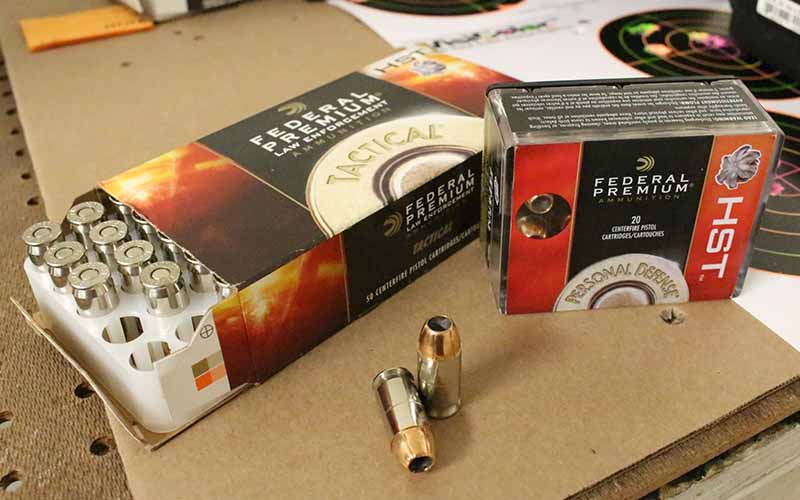
Feed Me
No matter how great a bullet may be, if it doesn’t feed in your autoloader, it’s useless. There are few brands/configurations that’ll feed in every type of handgun, and I highly recommend investing the money in thoroughly testing a number of varying ammunition types in your chosen handgun. Standing with a handgun that hasn’t fed another round into the chamber can be a terrible feeling if the proverbial excrement has hit the oscillator. I’d much rather a traditional bullet that feeds reliably than the best premium design that sits cocked in the lips of a magazine or is wedged due to an improper feed ramp angle.
Extraction is another issue that can contribute to a malfunction. If the firearm is screaming to you that it just doesn’t like Brand X ammo, listen to it. Bottom line: It’s got to feed and extract, or it shouldn’t be relied upon for defensive situations.
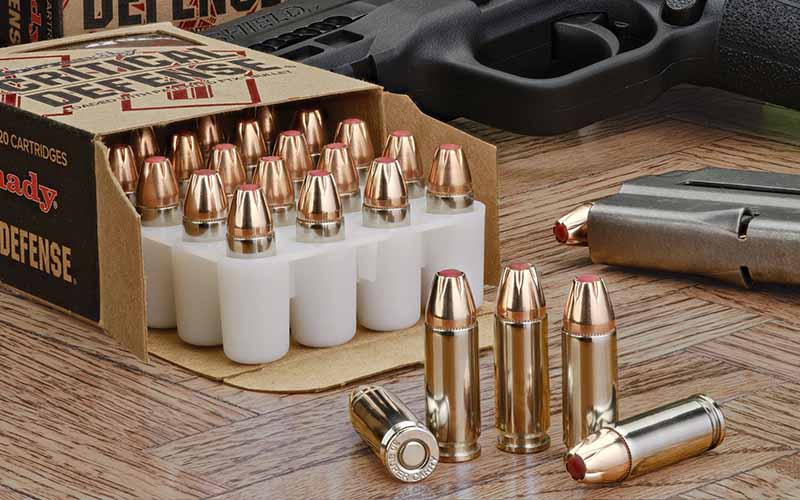
Under Pressure
We Americans have an undeniable love of speed, and the modern efforts to bring an older cartridge to a different level of performance through the +P (read: higher pressure) designation. Some guns can handle the higher pressure levels. Others—especially the older ones—don’t fare so well.
For example, I got my hands on some +P ammo for my S&W Model 36 .38 Special, and while it might not have been the wisest choice in that gun, the absolute ear-shattering report from the snubnose was enough to have me set the ammo back on the shelf. That little gun is much better served (in my opinion) by standard-grade ammo. If you feel the additional velocity and energy values of the +P ammo engenders more confidence, so be it. Just make sure you can shoot it as well as the standard ammunition, in a real-world situation.
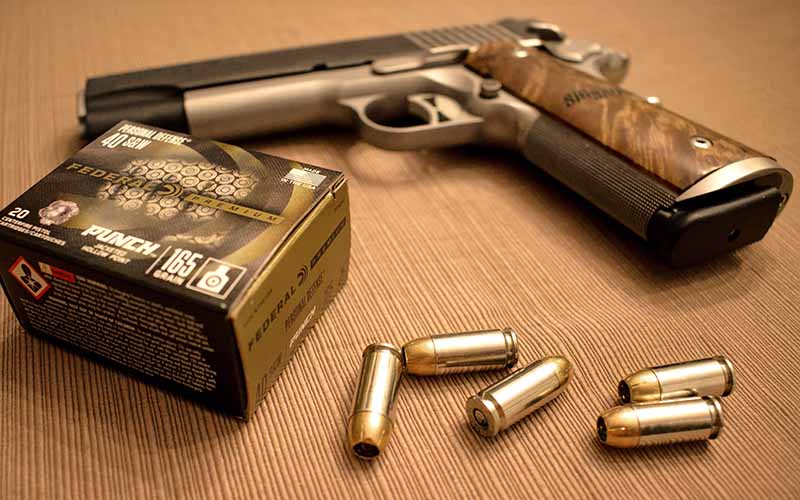
In Conclusion
My late mother used to advise: “It’s all about balance.” While I didn’t understand the wisdom of that statement as a younger man, it rings in my ears more often as get on in years, and it surely applies to the handgun world. I want the best blend of terminal performance, reliable feeding and acceptable recoil/muzzle jump possible, so that if I have to use my handgun to save a life, there are no questions about the chosen ammunition.
Editor's Note: This article originally appeared in the 2023 EDC special issue of Gun Digest the Magazine.
More On Defensive Handgun Ammo:

Next Step: Get your FREE Printable Target Pack
Enhance your shooting precision with our 62 MOA Targets, perfect for rifles and handguns. Crafted in collaboration with Storm Tactical for accuracy and versatility.
Subscribe to the Gun Digest email newsletter and get your downloadable target pack sent straight to your inbox. Stay updated with the latest firearms info in the industry.

![Best Concealed Carry Guns In 2025 [Field Tested] Wilson Combat EDC X9S 1](https://gundigest.com/wp-content/uploads/Wilson-Combat-EDC-X9S-1-324x160.jpg)


![Best 9mm Carbine: Affordable PCCs [Tested] Ruger Carbine Shooting](https://gundigest.com/wp-content/uploads/Ruger-Carbine-Shooting-100x70.jpg)
![Best AR-15: Top Options Available Today [Field Tested] Harrington and Richardson PSA XM177E2 feature](https://gundigest.com/wp-content/uploads/Harrington-and-Richardson-PSA-XM177E2-feature-100x70.jpg)
